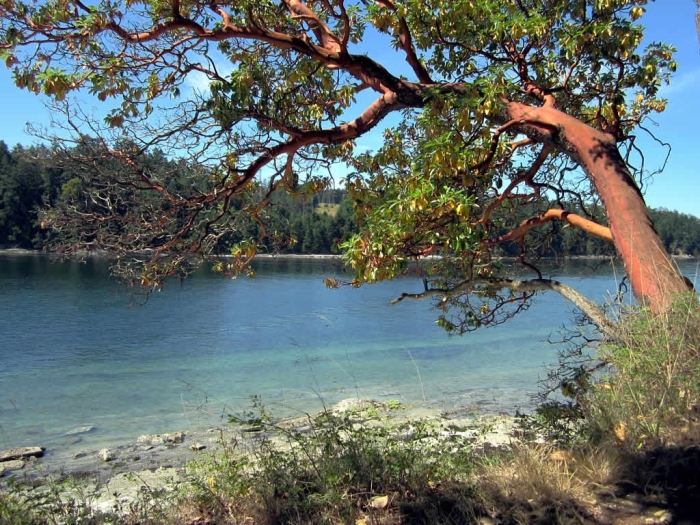Pacific Madrone
(Arbutus menziesii)
Pacific Madrone (Arbutus menziesii)
/
/

David Stanley from Nanaimo, Canada
CC BY 2.0






































































Estimated Native Range
Summary
The Pacific Madrone is valued for its striking bark, evergreen foliage, and its ability to thrive with minimal care once established, making it suitable for naturalistic plantings and reforestation projects. It is also used as an ornamental tree in gardens and landscapes for its unique appearance and drought tolerance. This species requires full sun and well-drained, acidic to neutral soils. It is drought-tolerant and does not require additional water or fertilizer once established; however, supplemental water and nitrogen can increase growth but may also increase susceptibility to disease. Transplanting is difficult, and seedlings should be placed in their permanent location while small to avoid transplant shock.CC BY-SA 4.0
Plant Description
- Plant Type: Tree
- Height: 20-50 feet
- Width: 20-50 feet
- Growth Rate: Slow
- Flower Color: Pink, White
- Flowering Season: Spring
- Leaf Retention: Evergreen
Growth Requirements
- Sun: Full Sun, Part Shade
- Water: Low
- Drainage: Fast, Medium
Common Uses
Bank Stabilization, Bee Garden, Bird Garden, Butterfly Garden, Deer Resistant, Drought Tolerant, Edible*Disclaimer: Easyscape's listed plant edibility is for informational use. Always verify the safety and proper identification of any plant before consumption., Erosion Control, Fire Resistant, Fragrant, Hummingbird Garden, Salt Tolerant, Showy Flowers
Natural Habitat
Coastal regions, dry slopes, canyons, and edges of evergreen forests
Other Names
Common Names: Pacific Arbutus , Madrona , Madroño , Arbousier D’Amérique , Arbousier De Menzies , Kaliforniskt Smultronträd , Madrone
Scientific Names: Arbutus menziesii , Arbutus procera , Arbutus menziesii var. elliptica , Arbutus menziesii var. oblongifolia
GBIF Accepted Name: Arbutus menziesii Pursh